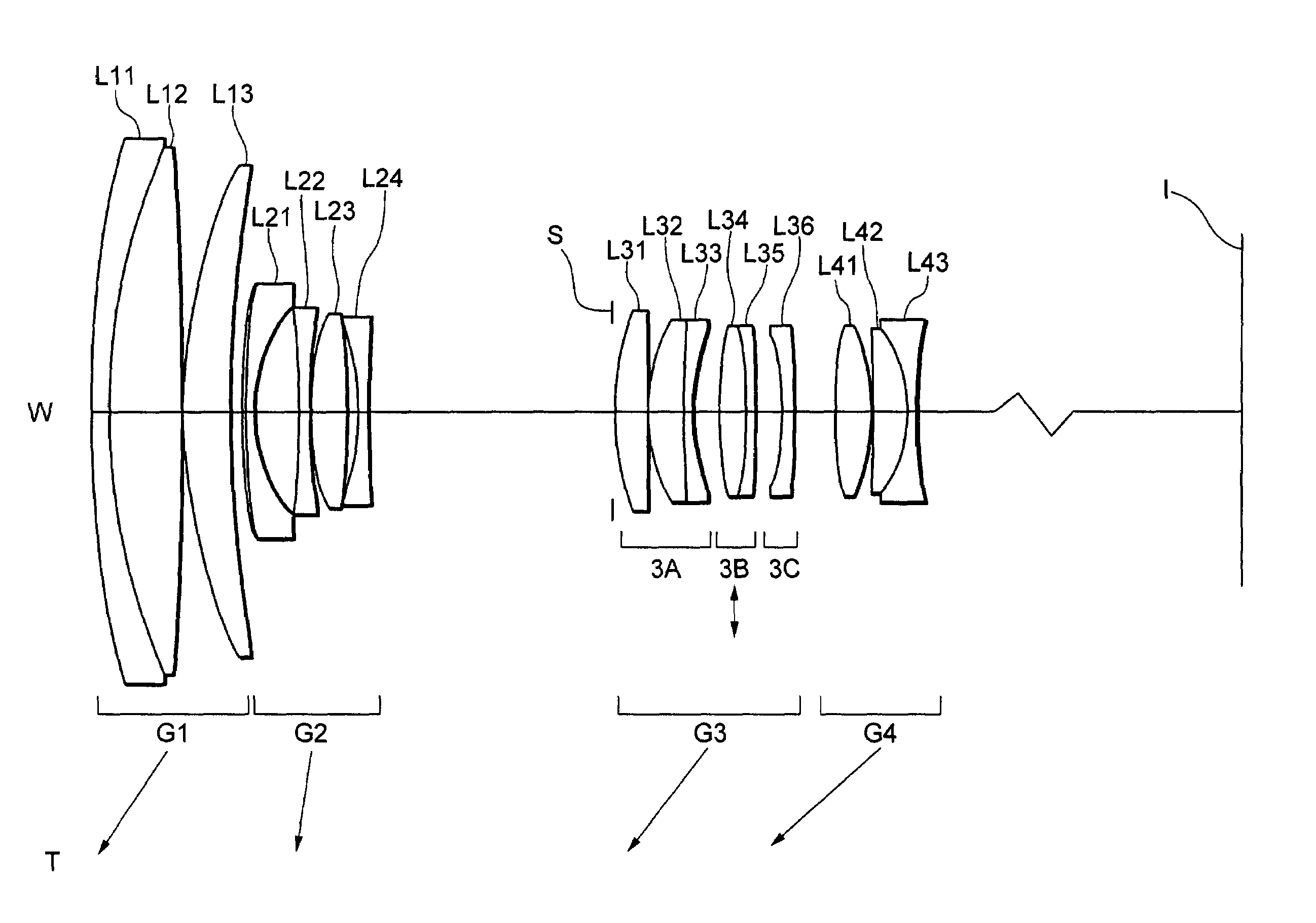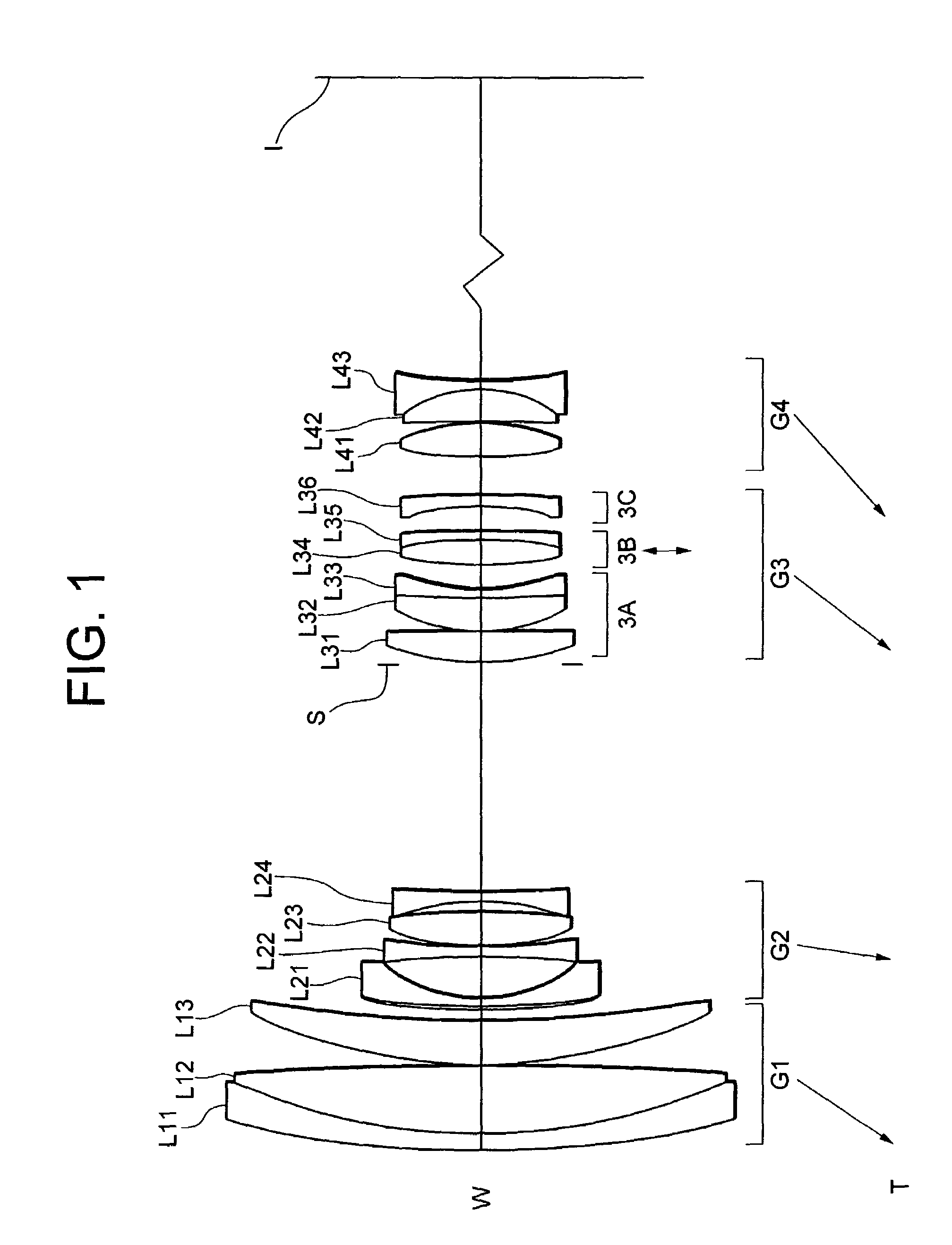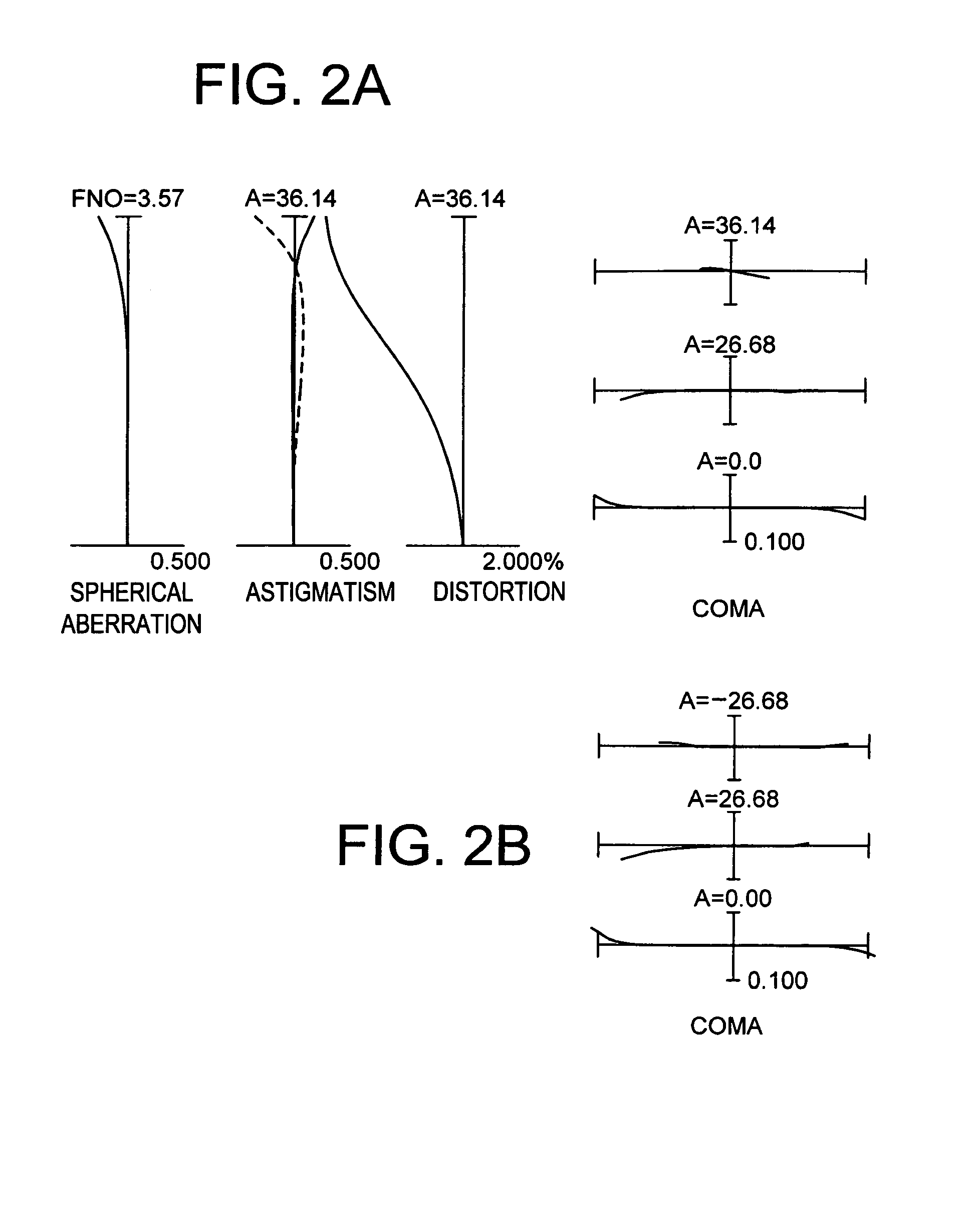Zoom lens system
a zoom lens and zoom technology, applied in the field of zoom lens system, can solve the problems of image blurring, image deterioration, image blurring increase, etc., and achieve the effect of high zoom ratio and high zoom ratio
- Summary
- Abstract
- Description
- Claims
- Application Information
AI Technical Summary
Benefits of technology
Problems solved by technology
Method used
Image
Examples
first embodiment
[First Embodiment]
[0070]A zoom lens system according to a first embodiment of the present invention includes, in order from an object, a first lens group having positive refractive power, a second lens group having negative refractive power, a third lens group having positive refractive power, and a fourth lens group having positive refractive power. When the state of lens group positions varies from a wide-angle end state to a telephoto end state, the first lens group through the fourth lens group move such that a distance between the first lens group and the second lens group increases, a distance between the second lens group and the third lens group decreases, and a distance between the third lens group and the fourth lens group decreases. The third lens group includes at least two sub-lens groups having positive refractive power. The zoom lens system carries out vibration reduction correction by shifting an image by means of moving either sub-lens group of the two sub-lens grou...
example 1
[0088]FIG. 1 is a diagram showing a sectional view of a zoom lens system according to Example 1 of the first embodiment of the present invention.
[0089]In FIG. 1, the zoom lens system is composed of, in order from an object, a first lens group G1 having positive refractive power, a second lens group G2 having negative refractive power, a third lens group G3 having positive refractive power, and a fourth lens group G4 having positive refractive power. When the state of lens group positions varies from a wide-angle end state to a telephoto end state, the first lens group G1 through the fourth lens group G4 move such that a distance between the first lens group G1 and the second lens group G2 increases, a distance between the second lens group G2 and the third lens group G3 decreases, and a distance between the third lens group G3 and the fourth lens group G4 decreases. The reference symbol I denotes the image plane.
[0090]The third lens group G3 is composed of, in order from the object,...
example 2
[0103]FIG. 5 is a diagram showing a sectional view of a zoom lens system according to Example 2 of the first embodiment of the present invention.
[0104]In FIG. 5, the zoom lens system is composed of, in order from an object, a first lens group G1 having positive refractive power, a second lens group G2 having negative refractive power, a third lens group G3 having positive refractive power, and a fourth lens group G4 having positive refractive power. When the state of lens group positions varies from a wide-angle end state to a telephoto end state, the first lens group G1 through the fourth lens group G4 move such that a distance between the first lens group G1 and the second lens group G2 increases, a distance between the second lens group G2 and the third lens group G3 decreases, and a distance between the third lens group G3 and the fourth lens group G4 decreases. The reference symbol I denotes the image plane.
[0105]The third lens group G3 is composed of, in order from the object,...
PUM
 Login to View More
Login to View More Abstract
Description
Claims
Application Information
 Login to View More
Login to View More - R&D
- Intellectual Property
- Life Sciences
- Materials
- Tech Scout
- Unparalleled Data Quality
- Higher Quality Content
- 60% Fewer Hallucinations
Browse by: Latest US Patents, China's latest patents, Technical Efficacy Thesaurus, Application Domain, Technology Topic, Popular Technical Reports.
© 2025 PatSnap. All rights reserved.Legal|Privacy policy|Modern Slavery Act Transparency Statement|Sitemap|About US| Contact US: help@patsnap.com



